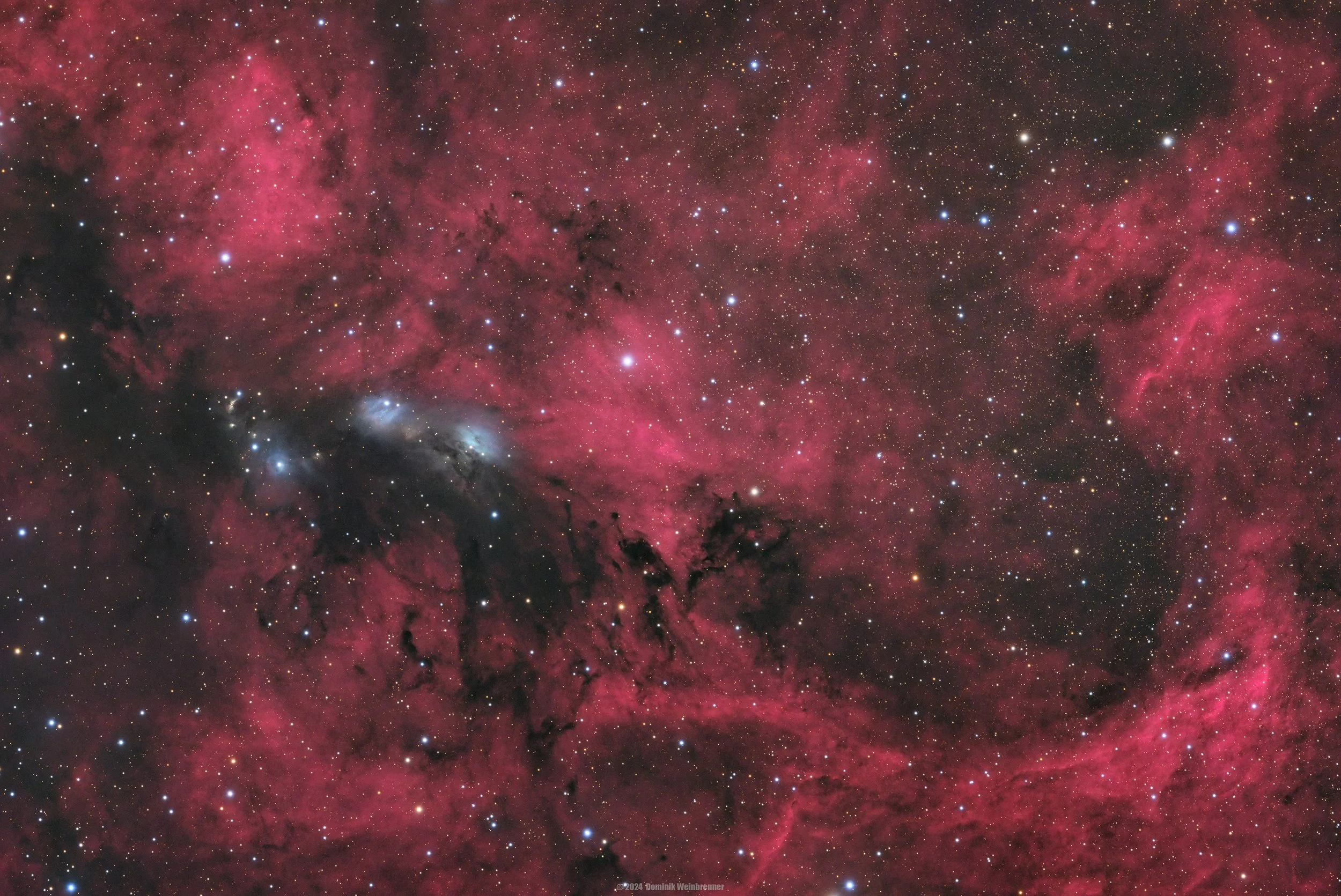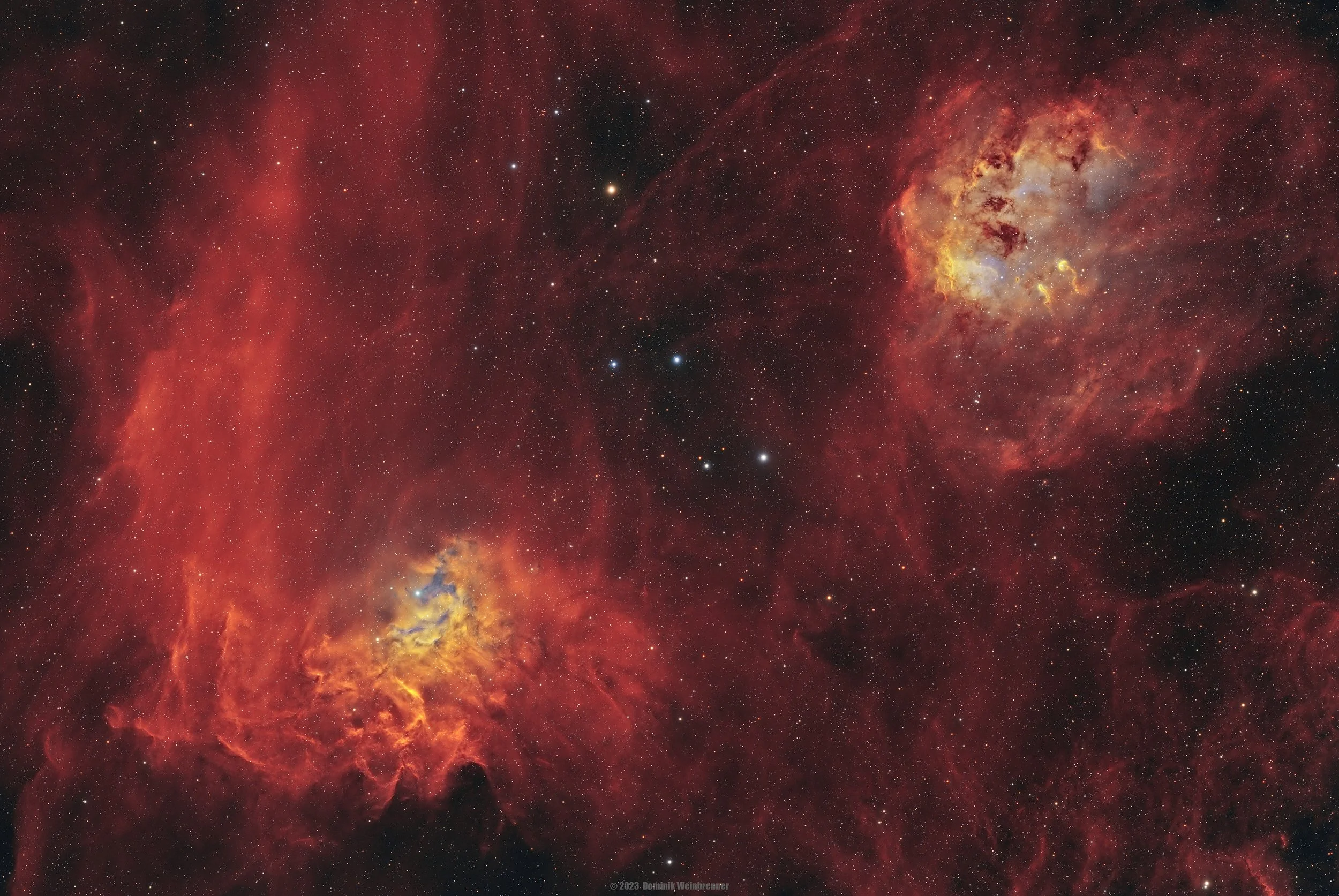
AAPOD2 Image Archives
Reflections in Cygnus
The constellation Cygnus, hosts a wealth of nebulous regions that captivate astronomers and astrophotographers alike. This image showcases several prominent nebulae, captured using LRGB (Luminance, Red, Green, Blue) and Hydrogen-alpha (Ha) filtered data to highlight their intricate details and vibrant colors. Among the notable objects in this region are the North America Nebula (NGC 7000), the Pelican Nebula (IC 5070), and the Veil Nebula Complex, remnants of a supernova explosion that occurred thousands of years ago.
The use of Ha filters is particularly effective in enhancing the visibility of hydrogen-rich regions, often seen as bright red emissions. These filters help isolate the light emitted by ionized hydrogen, providing a clearer view of the nebulae's structure and composition. Combining LRGB and Ha data allows for a more comprehensive and aesthetically pleasing representation of these celestial objects, revealing the dynamic processes of star formation and the interplay of cosmic dust and gas.
Horsehead in OHS
The Horsehead Nebula, also known as Barnard 33, stands as an iconic silhouette against the backdrop of the Orion Molecular Cloud Complex. This dark nebula, situated in the constellation Orion, captivates the imagination with its distinctive shape resembling that of a horse's head, immortalized against the glowing backdrop of the emission nebula IC 434.
Located approximately 1,500 light-years away from Earth, the Horsehead Nebula owes its striking appearance to the interplay of cosmic dust and starlight. The dark dust clouds obscure the light from background stars, creating a stark contrast against the vibrant emissions of nearby hydrogen gas. Despite its haunting beauty, the Horsehead Nebula serves as more than just a celestial spectacle; it also serves as a stellar nursery, where new stars are born amidst the cosmic clouds.
A Fire In Auriga
In this captivating bi-color image, the dynamic duo of IC 410 and IC 405 unfolds in the cosmic canvas, revealing the ionized gases captured through hydrogen alpha (Ha) and oxygen (OIII) filters. IC 410, also known as the Tadpoles Nebula, unveils its reddish hues, showcasing regions of intense star formation and ionized hydrogen. Meanwhile, IC 405, the Flaming Star Nebula, bathes in the greenish-blue glow of oxygen emissions.
The Tadpoles Nebula within IC 410 features elongated structures resembling tadpoles, sculpted by the powerful stellar winds and radiation emanating from massive stars within the nebula.
Illuminated by the runaway star AE Aurigae, IC 405 is believed to have been ejected from the Orion Trapezium Cluster millions of years ago, contributing to the unique dynamics of this cosmic region.





